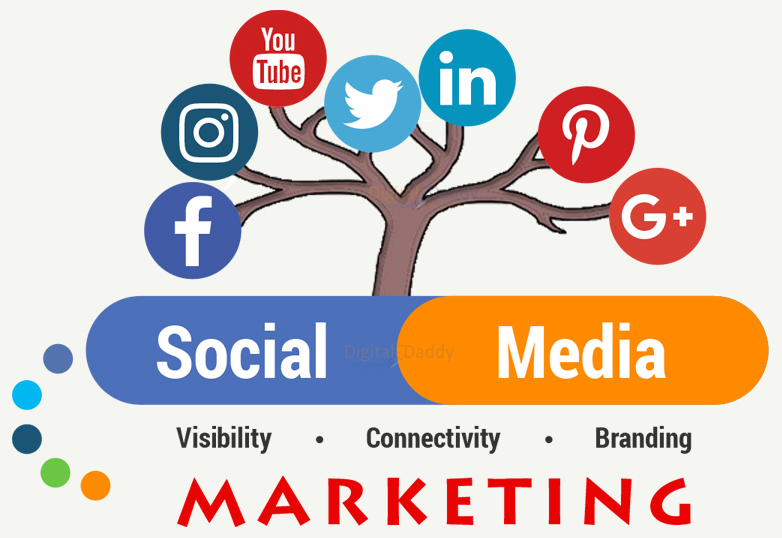Introduction
It’s no secret that social media has quickly become one of the most powerful marketing tools available to businesses today. Social media platforms allow companies to reach customers in new ways and engage them on a personal level. This article will help you understand what social media marketing is, how it differs from traditional marketing, and how you can plan your own successful social media campaign!
What is social media marketing?
Social media marketing is the use of social media platforms and websites to promote a product or service. It’s an effective way to reach potential customers, build your audience, and drive sales.
Social media marketing has become increasingly important for businesses that want to be successful in today’s digital world. Social networks allow you to connect with people from all over the world, so it’s not just about promoting your business locally anymore—you can do that on Facebook! The more followers (or friends) you have on Facebook, Twitter, Instagram etc., the more exposure your content gets which equals more brand awareness and leads for your business.
Set goals
- Define your goals.
- Make sure they’re realistic and measurable.
- Make sure they’re attainable within the time frame you’ve allotted yourself.
Who are you talking to?
Social media is about talking with people, so before you start talking, it’s important to know who you are talking to. Your audience is the group of people most likely to be interested in what you have to say.
Your target market is the group of people most likely to be interested in your product or service. This may overlap with your audience somewhat (if everyone on earth has an interest in buying something from someone), but generally speaking, there will be some groups who are more likely than others.
This could be a certain age range (18-25), income level (middle class), gender (women), geographic location (New York) or any other number of factors that help define how they spend their time online and what they’re looking for when they go online.
What are you going to say?
Your social media content should be consistent. If you’re posting to Twitter, Instagram, and Facebook every hour on the hour, that’s going to be too much information for people—and they might not take you seriously when they do check your account. You want to make sure that whatever works best for your audience is what’s being posted.
You also need to give some thought as to what kind of voice and tone belongs in your social media strategy. This will depend largely on who your target audience is and why they would follow or like/follow you in the first place (if they did). But it can also come down to individual preference: Do you want a more casual approach? Or perhaps something more formal?
Keep in mind that if there are multiple people working at a company — whether it’s one big corporation with many locations or several smaller ones under one umbrella organization — then there might be different ways of speaking depending upon who’s reading the posts.”
Plan your attack
Now, it’s time to put your knowledge to the test. As you probably know, getting started with social media marketing can be overwhelming. That’s why we’ve created a comprehensive guide filled with the best information on how to succeed in this field.
In this section, we’ll discuss how to create a social media marketing strategy and plan your attack. You’ll learn what elements are needed in a successful plan and how they relate to one another.
Here are some of the topics we’ll cover:
- Defining goals and objectives
- Identifying target audiences
- Creating content calendars
How do you want to measure success?
After you’ve decided on your goals and set up a plan of attack, it’s time to measure your results. As with everything else in the world of social media marketing, there isn’t a one-size-fits all solution here—you’ll need to define what success means for you and make sure that the metrics you choose will allow you to reach those goals.
Social media analytics sites like [Social Report](https://www.socialreport.com/) can help provide data on how your social media accounts are performing. This includes things like post frequency, audience engagement (how much interaction is taking place between accounts), follower growth and more. All of this information can help show whether or not your efforts are working towards your goals—and whether or not adjustments need to be made along the way.
One thing that many marketers struggle with when defining their success metrics is ROI (or Return On Investment). This refers specifically to how much money has been spent on marketing materials versus how much revenue was generated from those materials as a result; if an ad campaign cost $10 but only generated $5 worth of sales afterward, then its ROI would be negative ($5/$10 = -50%).
The best way to implement a successful social media marketing strategy is to establish clear goals and understand who you’re talking to.
To get the most out of your social media marketing efforts, you need to be clear about what it is you’re trying to achieve. You also need to know who you’re talking to. For example:
Talking points:
- identify your target audience
- know what you want to say
- plan your attack
- how to measure success
Conclusion
Social media marketing can seem daunting at first, but it’s really not that complicated. All you need to do is identify your goals and who you want to reach with your campaign. Once these two things are clear, you can create a plan that fits within those parameters and move forward on making it happen!


